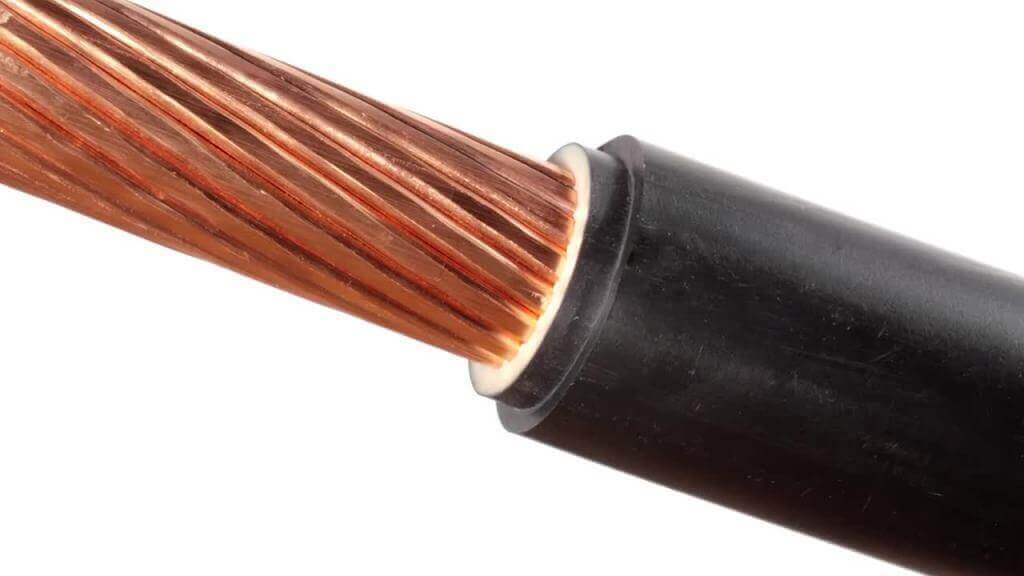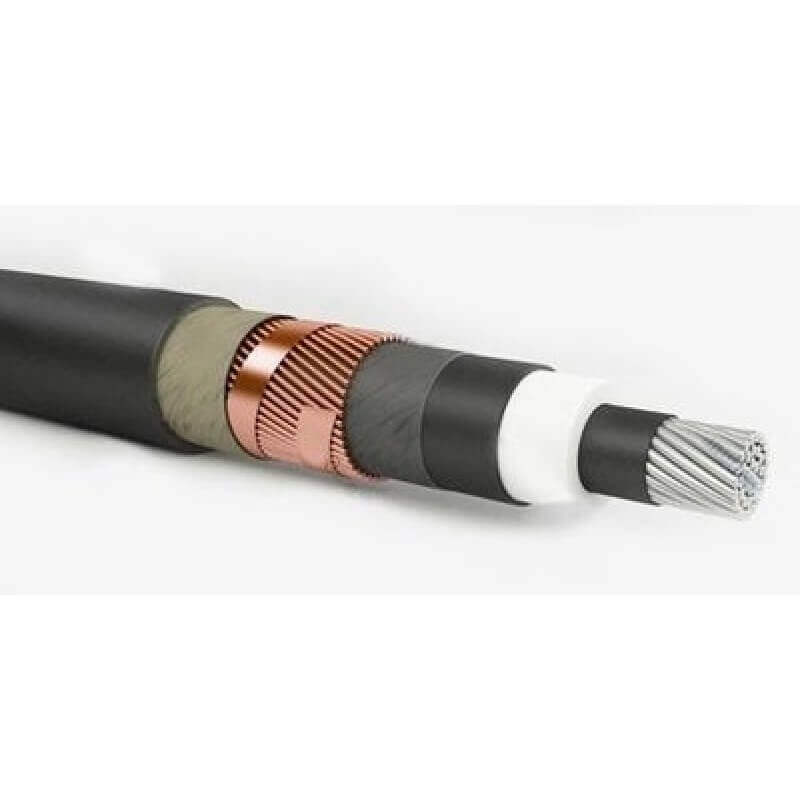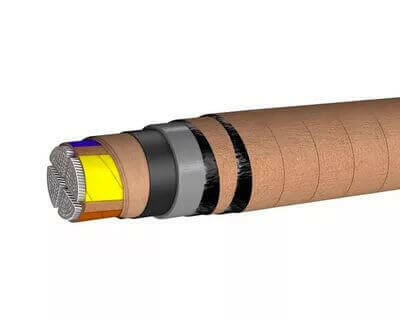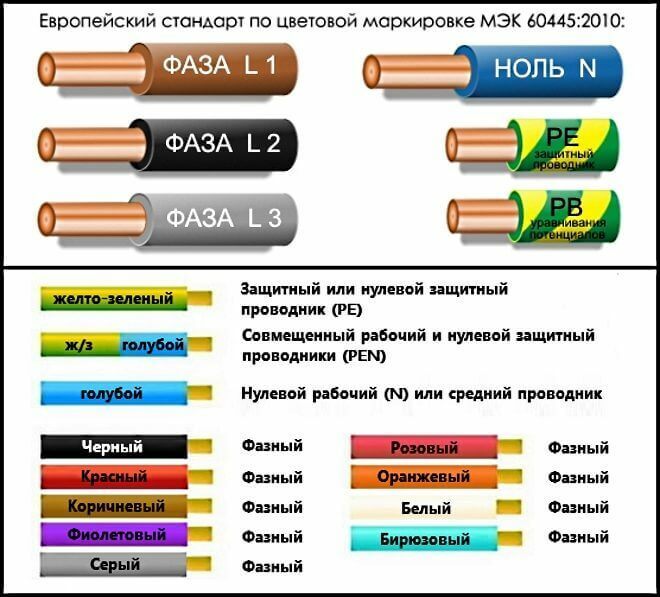Expert of the section "Question to an electrician", author of articles.
Electrician for the repair and maintenance of electrical equipment, experience more than 5 years.
In an apartment and in a car, as well as in other rooms and areas of life, you cannot do without a power cable when connecting various devices and equipment. But what is it and how to distinguish it from other types of electrical conductors? In this article, we will look at what a power cable is and what it is intended for.
Content:
- Definition
- Difference and design of cables
- Conductor
- Protective shell
- Briefly about labeling
Definition
Power cable - in a broad sense, it is a cable for transmitting electrical energy, connecting consumers to power from switchboards of industrial and municipal facilities. Traditionally, it is considered that the wire for connecting lighting devices, having a cross section of less than 1.5 sq. Mm, is lighting, and the cable to connect more powerful devices - power (these also do not include acoustic wire for an amplifier, network for a computer, television).
In some cases, the lighting wire is also called the power wire. For example, when connecting powerful lighting fixtures. It is also fair to call a twisted-pair cable for retro wiring a power cable.
Difference and design of cables
There is a huge variety of electrical power cables depending on the size and features of the device. All characteristics of the power cable depend on the conditions in which it will be used and the power of the consumers that it will feed. The minimum design of each product consists of several important elements: a conductive core, a protective insulating sheath of each core and the cable as a whole.
Conductor
Aluminum or copper are the two main materials that are used to make conductive wires. The choice of these materials is due to their high conductive properties (low resistance).
An electrical wire can have a different number of cores of various shapes. They may consist of single wires or stranded copper conductors.
Protective shell
According to the nature and composition of the containment, there are several main types of execution:
- rubber;
- polyethylene;
- oil impregnated paper;
- polyvinyl chloride.
With rubber insulation, they are used in the installation of systems at a maximum voltage of 10 kV. The advantages of this insulation are low moisture absorption and good flexibility, which simplifies the installation of complex routes. The main disadvantage is the inability to use in open networks, due to the instability of this type of insulation to ultraviolet rays and ozone.
 The power cable with XLPE insulation is used in networks with any voltage and is divided into groups according to the maximum voltage. The first group is used for voltages from 6 to 32 kV, the second - from 45 to 150 kV and the third - from 220 to 330 kV. This coating withstands very high temperatures and moisture, and also has a small weight compared to other types.
The power cable with XLPE insulation is used in networks with any voltage and is divided into groups according to the maximum voltage. The first group is used for voltages from 6 to 32 kV, the second - from 45 to 150 kV and the third - from 220 to 330 kV. This coating withstands very high temperatures and moisture, and also has a small weight compared to other types.

With oil-impregnated paper insulation, an electrical power cable is used to transmit electrical energy in networks with voltages up to 35 kV. For additional protection against moisture, mechanical and chemical effects on paper insulation, such a wire has a lead sheath. The aluminum shell is not used in aggressive chemical environments, as it is easily destroyed.

PVC is one of the most common types of insulating materials for electrical power at the moment. cable in household and utility networks with voltage up to 660 Volts, as well as low voltage industrial networks (1–6 kV). It has received the greatest distribution due to its manufacturability and low price, as well as high elasticity and incombustibility.

In addition to core insulation, a cable usually has a common protective sheath, which serves to unite all cores and protect them from aggressive environments, mechanical and other influences. It is also made of various polymeric materials that do not conduct electric current, it can have different thickness, flexibility and other necessary properties.
Briefly about labeling
To indicate the various properties of the power cable, different types of marking are currently used. To designate the materials of the core and insulation, letters are used that are in the marking in certain places and determine the type and purpose of the product.
The core material is indicated by the first character or its absence. For example, with aluminum wires in the product type marking, it is indicated by the first letter “A” (for example, (A) VBbShv). If the symbol is absent, then this indicates a conductor with copper conductors.
Types of insulation are indicated by the following signs, after the core material. "V" means polyvinyl chloride (VVG) coating, "C" - with impregnated paper insulation, "NR" - non-combustible with rubber insulation, and P - indicates a polyethylene coating.
The protective sheath is marked as follows: C - lead, O - protection of each separately, A - aluminum, P - made of polymeric materials, B - made of polyvinyl chloride.
Certain types of power cable are armored to protect against external negative factors and are marked according to the type and composition of the armor:
- B and Bn: armored from steel and, accordingly, armored from non-combustible steel;
- BbG: armored protection from a steel profile tape (including protection against rodents);
- K: from round wires with galvanization;
- P: from flat wires with galvanization.
Depending on the shielding, the power cable can be made with a copper screen over an insulated current-carrying core (E), with a common screen for a stranded wire (Eo), sealed version (d).
The types of flammability of the containment material can be determined by special symbols, which are indicated at the end of the entire marking: “ng” - non-combustible wire, “ng LS” - non-combustible protection, which has a low emission of harmful substances.
There are also types that are made with a cable inside, with UV protection, with heat-resistant insulation, with oil-resistant insulation and other types.
Letter marking Russian and foreign manufacturers differ from each other, as different standards are used for the types of products (in Russia they are labeled according to PUE and GOST). But the designation principle remains the same for any material: each symbol designates sequence of materials from inner to outer layer, i.e. from core material to protective shell.

For convenient installation, in addition to the letter marking of the power cable, there is also a color marking by type and purpose. Different countries use different color marking, however, most countries adhere to the officially accepted standard adopted by the IEC (International Electrotechnical Commission). In the classic case, the blue conductors indicate the neutral conductor, the black or brown conductors indicate the phase conductor, and the two-color yellow-green conductor indicates the ground wire.


